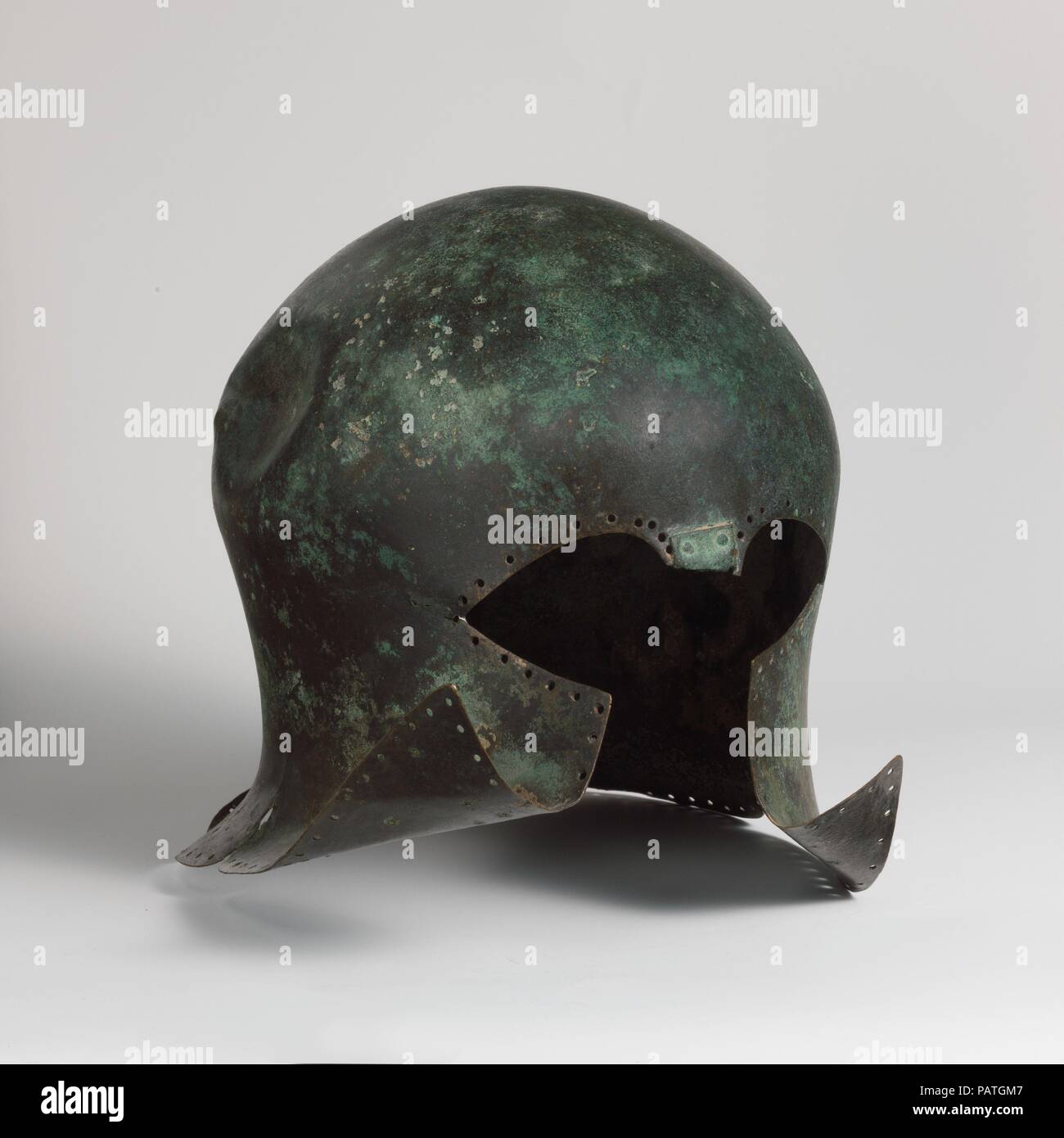Bronze helmet of Corinthian type. Culture: Greek. Dimensions: 9 1/16 x 10 9/16 x 8 3/8in. (23 x 26.8 x 21.2cm). Date: ca. 650-600 B.C.. The historian Herodotos mentions the Corinthian helmet as part of the equipment of the Greek hoplite (foot soldier). As a result, the predominant type of helmet, with a rounded calotte, small openings for the eyes, and a distinct nose-piece has been identified as such. Thanks to the large number of examples excavated at Olympia, the typological variety and development are well understood. This example, said to be from Olympia, is quite early, as indicated by

Image details
Contributor:
Album / Alamy Stock PhotoImage ID:
PATGM7File size:
50.5 MB (1.1 MB Compressed download)Releases:
Model - no | Property - noDo I need a release?Dimensions:
4200 x 4200 px | 35.6 x 35.6 cm | 14 x 14 inches | 300dpiPhotographer:
AlbumMore information:
This image could have imperfections as it’s either historical or reportage.
Bronze helmet of Corinthian type. Culture: Greek. Dimensions: 9 1/16 x 10 9/16 x 8 3/8in. (23 x 26.8 x 21.2cm). Date: ca. 650-600 B.C.. The historian Herodotos mentions the Corinthian helmet as part of the equipment of the Greek hoplite (foot soldier). As a result, the predominant type of helmet, with a rounded calotte, small openings for the eyes, and a distinct nose-piece has been identified as such. Thanks to the large number of examples excavated at Olympia, the typological variety and development are well understood. This example, said to be from Olympia, is quite early, as indicated by its unarticulated edges and the small cutout in the middle of each side. Museum: Metropolitan Museum of Art, New York, USA.